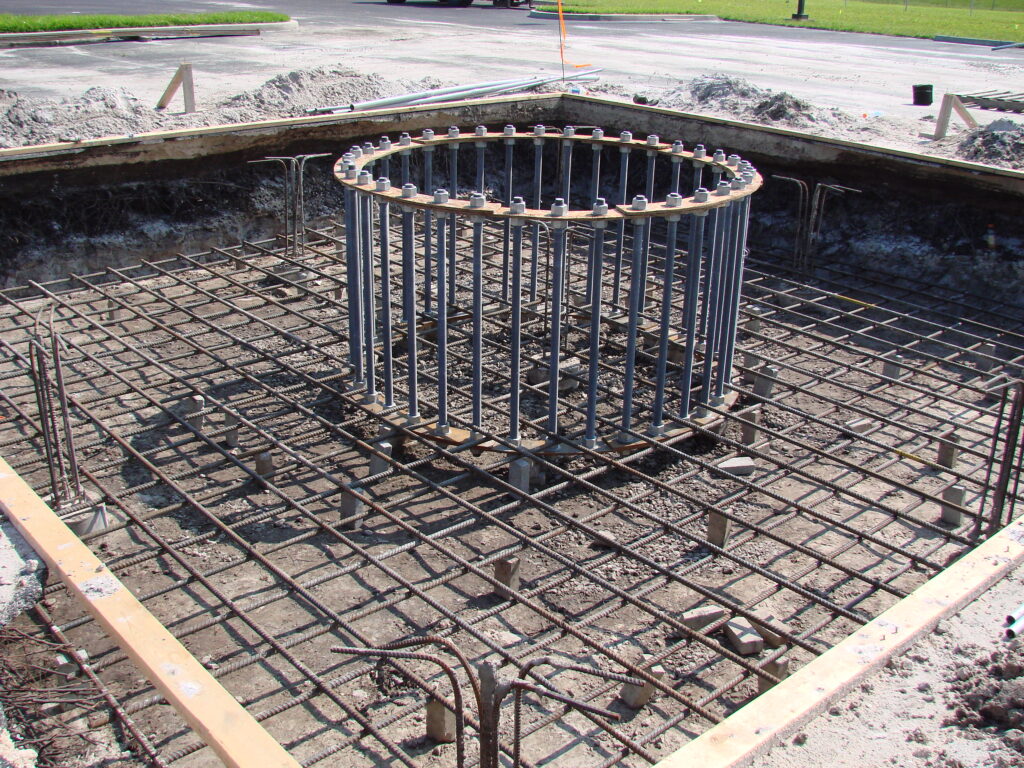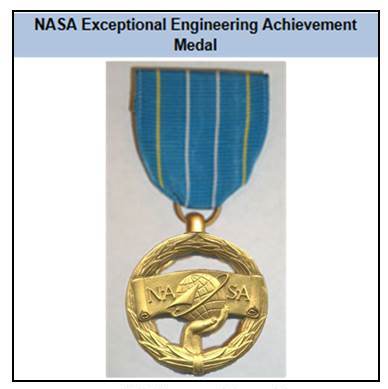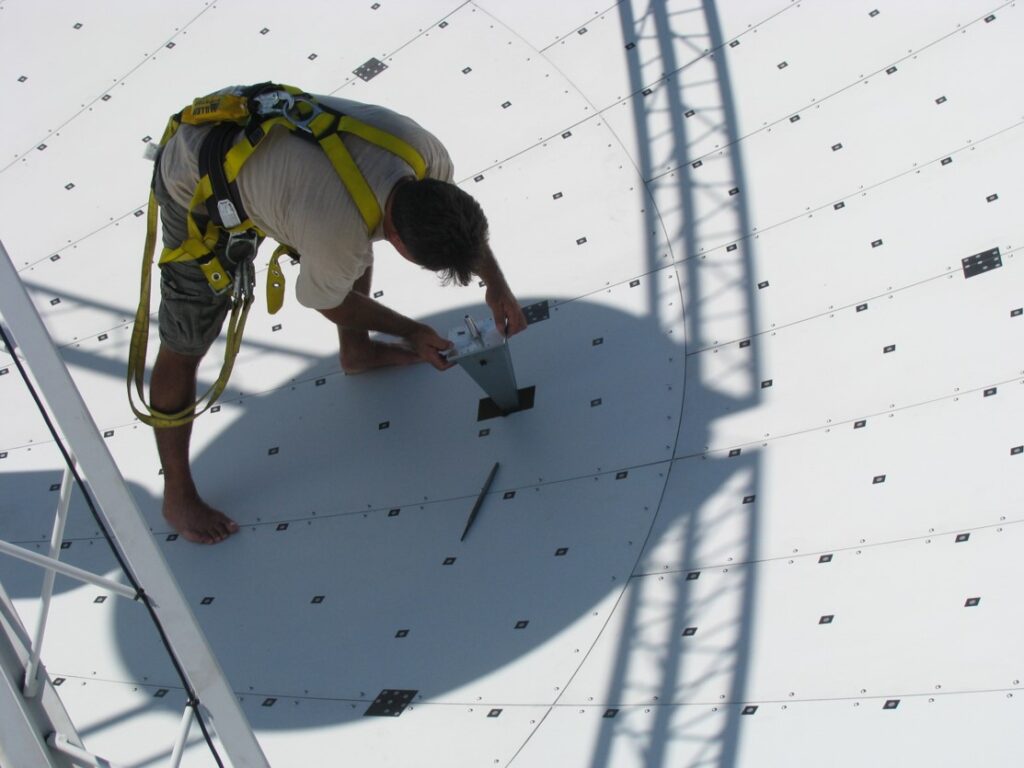Photos
Installation of 3-12m antennas















NASA TxACE: Martin & Minear Widely-Spaced, Large Reflector Coherent Transmit and Calibrated Receive Arraying Demonstration, 2010; The 3-12m antenna array remained calibrated for the entire six months of operation using our Self-Controlled arraying method. Note the low elevation angle of the GEO targets in the last two photos.
NASA HQ Exceptional Engineering Achievement Medals, 2011






On June 30, 2011, Research Senior Scientists, Dr. G. Patrick (Pat) Martin and Ms. Kathleen (Kathy) Minear were presented with NASA’s most prestigious engineering honor, the Exceptional Engineering Achievement Medal. Their awards were presented by NASA Administrator Charles Bolden and Associate Administrator Chris Scolese in a televised ceremony at NASA headquarters in Washington, DC. Four medals were presented in this category, with Pat and Kathy receiving the only two awarded to non-agency individuals.
The Exceptional Engineering Achievement Medal is given “for unusually significant engineering contributions towards achieving NASA’s mission.” Pat and Kathy were recognized for their outstanding work on the NASA-funded Transmit Array Combining Experiment (TxACE), “For the creation and operational demonstration of transmit adaptive arraying concepts and algorithms for widely-spaced apertures, including continual self-calibration through phase transfer methods and real-time tropospheric signal mitigation.”
Their transmit arraying method was demonstrated using three 12m antennas spaced more than 60 meters apart in Palm Bay, FL (at former Harris GCSD). The technology enables a signal to be transmitted from individual, widely-spaced antennas to arrive at a target in space simultaneously. For over four decades the reverse of transmit arraying – receive arraying – had been possible. Signals from widely-spaced antennas could be received and coherently combined, but not transmitted. Pat and Kathy’s system architecture and algorithms overcame a multitude of problems, and, at 1 a.m. during Tropical Depression 16 on September 29, 2010, their uplink arraying method mitigated these factors in real-time and autonomously. This was the first operationally feasible method ever demonstrated.
Frank Van Rensselaer, former Senior Executive Account Manager for NASA business was instrumental in the realization of this innovative technology. He was in attendance at the award ceremony. Van Rensselaer remark, “Many NASA senior executives from Headquarters and NASA Space Centers visited the TxACE operations center during the testing and have consistently expressed their appreciation of the hard work and dedication of Pat and Kathy and their team. Martin and Minear provided a detailed briefing of their method and results in 2010 to NASA’s JPL transmit arraying team.
Future NASA missions will rely on being able to transmit large amounts of data to the moon, Mars, and beyond. An array of many individual antennas has significant advantages over the traditional approach of continually increasing the power amplifier of one very large dish. This breakthrough technology method brings NASA closer to realizing its future communication needs.
Transmit arraying method and results












For decades widely-spaced transmit arraying was thought to be out of reach. Receiving a signal sent from Space to many widely-spaced ground antennas, then putting the signals together at a ground processing station was well understood. However, the opposite (transmit arraying) was thought to be an intractable problem. Once the signals leave the transmit antennas, it is too late to make corrections; they must be nearly perfectly phased before they radiate away.
In 2008-2010, NASA HQ, SCAN division funded a multi-million-dollar experiment, to test Dr. G. Pat Martin and Ms. Kathy Minear’s concept. It was entirely successful. From left-right, top-bottom the steps to achieving a working prototype are shown. The widely-spaced coherent transmit antenna array remained coherent for the entire 6 months of operation. Since it was designed to be Self-Controlled, it never required re-calibration.
